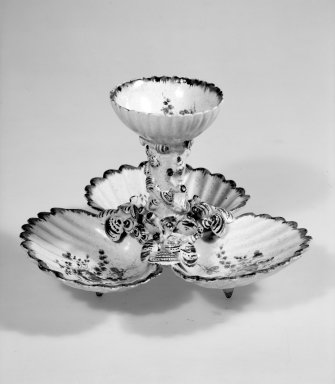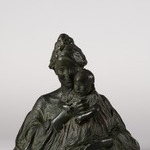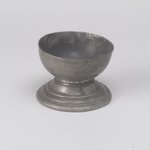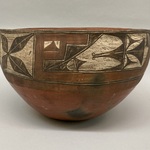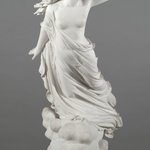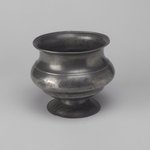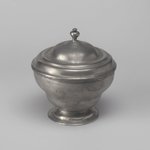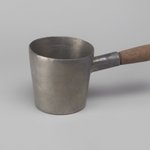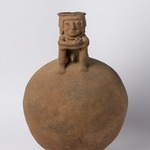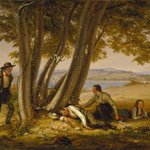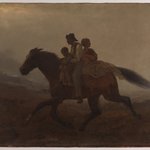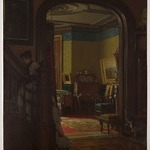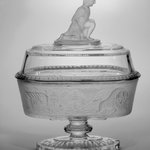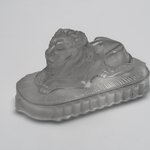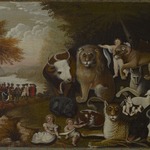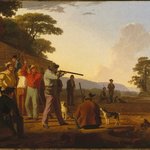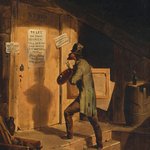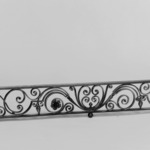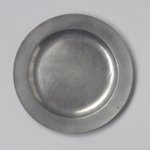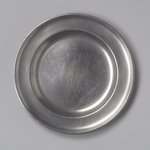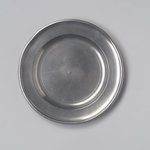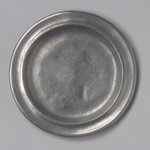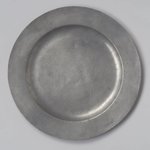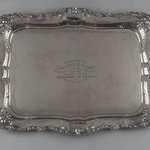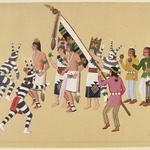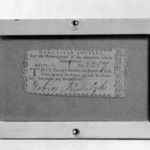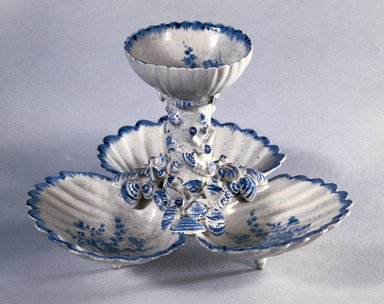
Sweetmeat Dish
Decorative Arts and Design
American China Manufactory objects are the oldest American-made porcelain, and extremely rare. Because England viewed the colonies as a market for its exports, it discouraged manufacturing. In the 1760s, however, when Americans were boycotting English luxury goods, Gouse Bonnin and George Anthony Morris, founders of the American China Manufactory, were among the first colonists to establish a porcelain factory. Although they succeeded in producing close imitations of English wares, Bonnin and Morris closed their factory after only two years, owing to the resumption of trade with England in 1770 and the difficulties inherent in the startup of a new enterprise.
MEDIUM
Soft-paste porcelain, underglaze
DATES
1770–1772
DIMENSIONS
5 1/4 x 7 1/4 x 7 1/4 in. (13.3 x 18.4 x 18.4 cm) (show scale)



MARKINGS
Marked on base: "P" in under glaze blue
COLLECTIONS
Decorative Arts and Design
ACCESSION NUMBER
45.174
CREDIT LINE
Museum Collection Fund
CATALOGUE DESCRIPTION
Sweetmeat dish, white earthenware, composed of three half shells attached to a central rusticated stem surmounted by a circular shell of smaller size; three short peg feet support the base. Many small shells and bits of coral are encrusted on a central stem; a hand painted design of flowers, wheat and insects in underglaze zaffer blue compose the decoration, the shells are accented in the same blue.
Condition: slightly nicked.
EXHIBITIONS
MUSEUM LOCATION
This item is not on view
CAPTION
Gousse Bonnin. Sweetmeat Dish, 1770–1772. Soft-paste porcelain, underglaze, 5 1/4 x 7 1/4 x 7 1/4 in. (13.3 x 18.4 x 18.4 cm). Brooklyn Museum, Museum Collection Fund, 45.174. Creative Commons-BY (Photo: Brooklyn Museum, 45.174_reference_SL1.jpg)
IMAGE
overall, 45.174_reference_SL1.jpg. Brooklyn Museum photograph
"CUR" at the beginning of an image file name means that the image was created by a curatorial staff member. These study images may be digital point-and-shoot photographs, when we don\'t yet have high-quality studio photography, or they may be scans of older negatives, slides, or photographic prints, providing historical documentation of the object.
RIGHTS STATEMENT
Creative Commons-BY
You may download and use Brooklyn Museum images of this three-dimensional work in accordance with a Creative Commons license. Fair use, as understood under the United States Copyright Act, may also apply.
Please include caption information from this page and credit the Brooklyn Museum. If you need a high resolution file, please fill out our online application form (charges apply).
For further information about copyright, we recommend resources at the United States Library of Congress, Cornell University, Copyright and Cultural Institutions: Guidelines for U.S. Libraries, Archives, and Museums, and Copyright Watch.
For more information about the Museum's rights project, including how rights types are assigned, please see our blog posts on copyright.
If you have any information regarding this work and rights to it, please contact copyright@brooklynmuseum.org.
RECORD COMPLETENESS
Not every record you will find here is complete. More information is available for some works than for others, and some entries have been updated more recently. Records are frequently reviewed and revised, and we welcome any additional information you might have.
